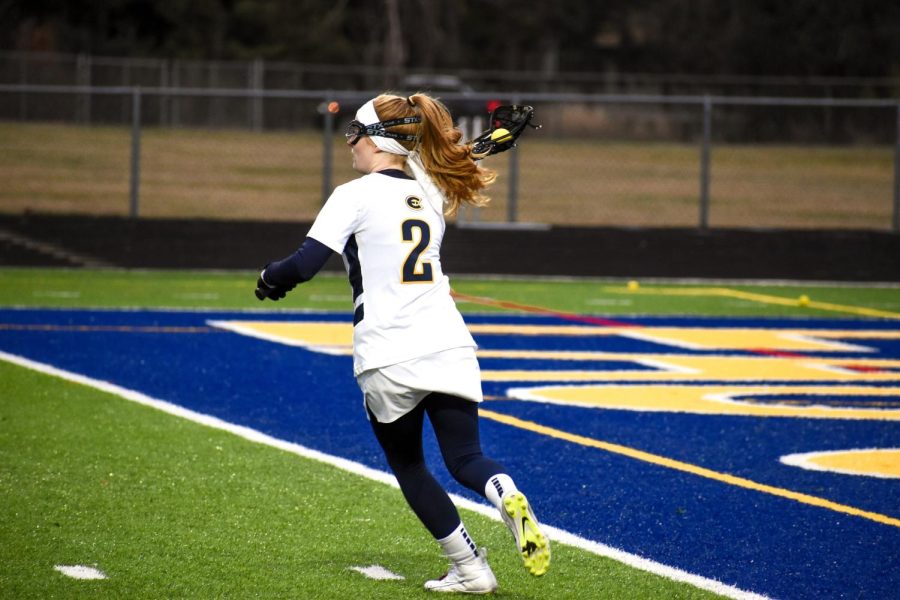Literally, the only thing — the only thing — I do not like about sports are the numbers. They scare me. And for the longest time, baseball stats scared me, too. Percentages, abbreviations, averages — I just didn’t pay attention to those for many years.
Since then, I’ve learned how the numbers and letters work together, and it’s not that scary. Considering I’m basically illiterate when it comes to any mathematical function, I believe that all of you can learn how to properly read baseball statistics and help your understanding go to the next level.
I will teach you, in the most simplified way possible, how to understand the most basic statistics in baseball. Mind you, there is a monstrous amount of stats out there, but we’ll go with the Major League Baseball standards.
Hardcore baseball fans, bear with me: This is a big ol’ review for you. I know you know how this works, but this week’s Baseline is for those fans who want to take their understanding to a new level!
Let’s look at this screen shot of the Los Angeles Angels’ Torii Hunter. I picked the Angels and Hunter because the Angels performed decently (not the best, not the worst) last year and Hunter because … well, he’s a good example to use.
Let’s start with the simplest of simple:
His jersey number is 48, and RF stands for right field, which means he plays in the right outfield area when their opponent is at-bat. He bats and throws right-handed.
(Friendly side note: these are batting statistics. There are other stats are for field positions, like pitching statistics. We’ll look at those on a different Baseline!)
There are nine different fielding positions. They’re all abbreviated by location (a field area or a base) and then by the specific area within that location (first, second, left, right, etc.) So, when reading stats, you’d have C (catcher), SS (shortstop), P (pitcher) 1B (first base) and so on.
With me so far? Good. Let’s keep going!
Now, if you look to the right side of the screen shot, it shows a table. Let’s look closer at that table.
What do those abbreviations and numbers mean when placed together?
AVG = batting average. The number comes from the equation of total hits divided by the total amount of at-bats a player has had. An average of .300 or higher is considered excellent, but averages in the .400 region have been accomplished, despite their near impossible nature (the last time was Ted Williams in 1941). Long story short, higher is better.
HR = home runs. That’s an easy one — it’s how many home runs you hit. So, in 2011, Hunter hit 23 homers and now has a career total of 281 home runs. Higher is better here as well, obviously!
RBI = runs batted in. This is the number of runners who score due to a batters’ hit or walk. So, let’s say there were players on second and third, and Hunter hit the ball and sent them both to home plate for two runs. Those would be two runs batted in. The only thing with ribbies (as they’re called) is when a batter reaches on an error they don’t count. Weird, I know. A lower RBI total doesn’t necessarily mean the player is bad, it might just mean their teammates don’t get on base a lot. So lower isn’t always bad, but higher is better again here.
OBP = on base percentage. This is probably the yuckiest of the basic stats. It requires math (BOOOOO). It’s the total number of times the player reached base (H + BB + HBP … see below) divided by their total at-bats.
Derp. I know. Okay, let’s look closer.
H stands for hits, or how many times they hit the ball and reached a base without getting out. BB stands for base on balls, or a walk, which is when a player gets four balls in one at-bat and is allowed a free trip to first base. And HBP stands for hit by pitch, which is when a player gets to first because they were hit by the pitcher’s throw.
Basically, the easiest way to read this statistic is to know that higher is better. For this stat, .330 and above is better!
So, if someone now randomly asks you, “What do you think of Torii Hunter?”
You now have the knowledge to say, “He’s pretty good! He has an excellent OBP and has a good number of RBIs. He’s a real team player, even if it means his average isn’t quite .300!”
Or, if you’re feeling gutsy, pick up fantasy baseball and play with numbers — listen to Frank F. Pellegrino, Eric Christenson and Chris Reinoos’ weekly fantasy baseball podcast Off the Wall online to get the scoop on that.
Screenshots courtesy of ESPN.com






